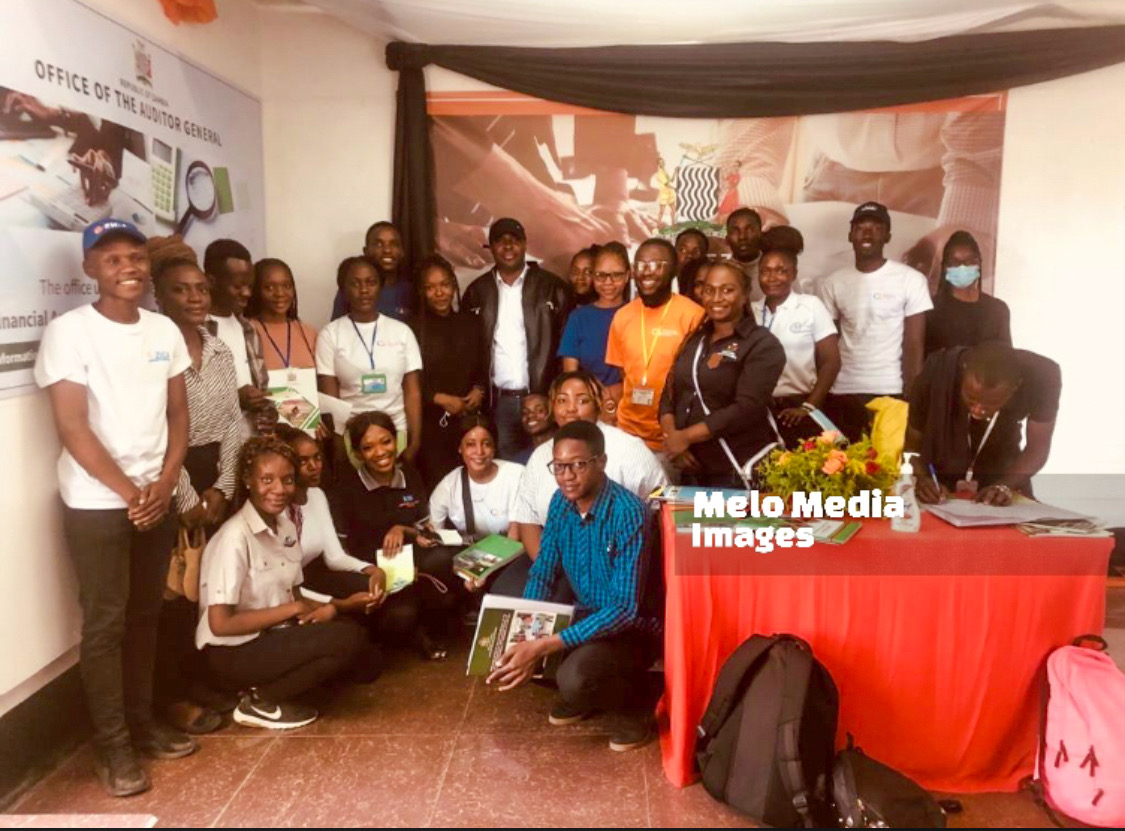By Mwamba Martin Sr | MEcon-Master of Economics | [email protected]
To provide context, let’s go back in time to the Soviet Union where internal production was highly emphasized. The USSR manufactured quality cars like the renowned Volga and Lada, some of which are still in operation across Europe, not only, the Soviet Union also produced top-notch passenger planes. The era was characterized by booming industries and a strong focus on social security for citizens.
Following the dissolution of the Soviet Union on December 26, 1991, significant changes occurred. The Soviet Union, a union of 15 Eurasian socialist republics sharing a communist ideology and a single leader, split into individual republics. This event led to the establishment of the Russian Federation, which assumed all legal responsibilities and debts of the former Soviet Union.
After the collapse of the Soviet Union, Russia underwent radical changes by transitioning from communism to a market economy. Communism, characterized by communal ownership of property and wealth to create a classless society, was the dominant ideology developed by Karl Marx and Friedrich Engels in 1848, standing in contrast to capitalist societies. President Boris Yeltsin and his economic team spearheaded economic reforms in Russia, including privatization, where approximately 90% of government enterprises were sold to a select group of wealthy individuals.
The transition to a capitalist society resulted in the dismantling and decline of industries, leading to a focus on exporting raw materials rather than fostering industrial growth. This shift facilitated lucrative trade relationships between Russia and the West, with Russia exporting raw materials and importing finished goods. This economic dynamic mirrors patterns seen in Africa, including countries like Zambia. Western nations, such as Germany, capitalized on Russia’s cheap resources to build sustainable industries, creating a mutually beneficial arrangement. However, this symbiotic relationship faced challenges and was not sustainable in the long run.
Fast forward to 2014, a coup in Ukraine led to the overthrow of a legitimate government, prompting Russia to intervene by recognizing the referendum held in Crimea in protest to the coup, where residents voted to join Russia overwhelmingly. This move was met with mixed reactions internationally. Crimea’s integration into Russia was swift, leading to a ceasefire and the signing of the Minsk agreement within two weeks.
During this tumultuous period, I was a student pursuing my undergraduate studies in Russia, I vividly recall the financial impact of these events. I remember going to bed with 36,000 rubles in my account, only to wake up the next morning to find it had surged to 99,000 rubles because I had a dollar account. The ruble’s value plummeted as sanctions were imposed, causing it to depreciate significantly. The exchange rate, which had been around 36 rubles to $1, skyrocketed to as high as $105.
As Russia faced mounting sanctions and the threat of being removed from the SWIFT international banking system, a banking crisis ensued. In response, Russia developed its own financial infrastructure to reduce reliance on Western systems. The Mir card system was introduced as an alternative to Western payment systems like VISA and Maestro. Additionally, the SPFS system was established as a domestic equivalent to SWIFT, ensuring Russia’s financial independence and resilience in the face of external pressures.
Let’s now move to February of 2022, when Russia initiated a special military operation, officially recognizing the Donetsk and Lugansk republics’ sovereignty and ultimately integrating them into Russia. This move resulted in an unprecedented wave of unilateral sanctions imposed by Western nations. The primary objective behind these extensive sanctions was to cripple the Russian economy, forcing Russia to submit to Western demands. Western countries anticipated an exodus of Western companies, envisaging an economic collapse that would incite popular revolt. However, this strategy backfired, with Western powers underestimating Russia’s resilience and capacity to adapt to adversity. While the sanctions did not achieve their intended purpose of causing an economic collapse, they did prompt Russia to strategically redirect its focus towards revitalizing neglected industries. The Russian government allocated substantial resources to research and development, revitalizing domestic sectors that had been previously disregarded. In the aftermath of Western companies exiting the Russian market, Russian and Chinese entities stepped in to fill the void, leading to increased opportunities for local businesses. Notable success stories emerged, such as the transformation of VKUSIN I TOCHKA, formerly known as McDonald’s, and the resurgence of other vacated businesses under new ownership. Contrary to the Western economists’ predictions of a collapse, the Russian economy not only withstood the sanctions but also began to outpace European economic growth rates. This unexpected resurgence led Western economists to caution that the Russian economy was overheating, marking a stark departure from previous bleak prognostications. Russia’s response to adversity, including the prioritization of home-grown innovation in microchip production, gas turbines, and other key industries, underscores the transformative potential of sanctions in stimulating domestic industrial growth. The World Bank and IMF now project that the Russian economy will expand by 3-5%, defying earlier pessimistic forecasts and highlighting a significant victory for Russia amidst adversity.
Back to Zambia and Africa, when comparing Africa to Russia, it becomes apparent that the challenges and opportunities are not far off. Russia was able to revitalize its dormant industries after facing adversity, while Africa, specifically Zambia, struggles with a similar predicament due to past decisions made during the Chiluba reforms and privatization era, albeit easier for Russia but similar in nature, as they had these industries before and just opted for the easy way out. During President Kaunda’s tenure, Zambia boasted manufacturing plants assembling Peugeots, bicycles, producing tires, among other goods. However, the Chiluba reforms (Zambia’s second Republican President) lead to the shift towards just exporting raw materials and importing finished products under subsequent administrations which stunted industrial growth and led to a decline in job opportunities and local livelihoods. Russia’s reindustrialization, prompted by external pressures, offers valuable lessons for Africa, which can leverage these insights to pave the way for its own industrial awakening. To kickstart this transformative journey, African countries and Zambia should consider the following strategies:
1. Unity of Purpose: Uniting under a common African agenda, as advocated by visionary leaders like Kwame Nkrumah, Kenneth Kaunda, Nelson Mandela, Patrice Lumumba and many others who preceded us, is vital for Africa to assert itself on the global stage. By speaking with one voice and collaborating as a continent, Africa can leverage its collective strength and resources to address common challenges and pursue common goals. The African Union and other regional bodies should play a crucial role in fostering unity and cooperation among African nations.
2. Decoupling from Western Financial Architecture: The call for Africa to establish its financial independence through initiatives like an Africa-wide currency, a central African bank, and a regional payment system is essential. By reducing reliance on external financial institutions dominated by Western powers, African countries can assert greater control over their economic policies, trade relationships, and monetary stability. Developing self-sustaining financial mechanisms will enable African nations to trade and conduct business within the continent more efficiently and independently.
3. Industrialization & Value Addition: Promote and support the growth of domestic industries through targeted investments and incentives to encourage local production. Shifting the focus from exporting raw materials towards industrialization and value addition is crucial for Africa to realize its economic potential. By promoting local manufacturing and processing industries, African countries can create jobs, enhance skills development, and retain more value within their borders. Encouraging foreign investors to establish production facilities and processing plants within Africa will not only boost local economies but also contribute to sustainable development and poverty eradication.
4.Research & Development (R&D): Indeed, prioritizing research and development (R&D) is crucial for African countries to foster homegrown innovation, enhance technological capabilities, and drive sustainable industrial growth. By investing in R&D initiatives, African nations can reduce their dependency on external sources for economic guidance and expertise, empowering them to chart their own path to development.
5. Improve Infrastructure: Enhance infrastructure development, including transport networks, power supply, and technological infrastructure, to facilitate industrial expansion and trade. This is very crucial as industrialization requires good road networks, rail lines and communication systems to supplement easy access to information and markets.
6. Skills Development: Prioritize skills development programs to equip the local workforce with the expertise needed to drive industrialization and sustain economic growth. By implementing these strategies and learning from Russia’s reindustrialization journey, Zambia and other African nations can lay the groundwork for a revitalized industrial sector that fosters economic development, creates job opportunities, and enhances self-reliance.
In conclusion, the example set by Russia demonstrates that countries can navigate challenging circumstances and chart their economic development path without solely relying on Western support or approval. Africa, with its diverse resources, potential for growth, and emerging partnerships with countries across the globe, has the opportunity to pursue mutually beneficial relationships based on respect and shared interests. By leveraging its strengths, fostering regional cooperation, and engaging with partners who prioritize partnership over subjugation, Africa can position itself as a key player in the global economy on its own terms. It is crucial for African nations to assert their sovereignty, promote self-reliance, and cultivate partnerships that empower them to pursue sustainable development strategies aligned with their unique needs and aspirations. By learning from diverse global models of success, including Russia’s resilience in adverse conditions, Africa can harness its potential, drive economic growth, and elevate its role on the global stage as a respected and independent player in the international community. However, advancing these strategies requires strong leadership, strategic vision, and concerted efforts by African governments, regional bodies, private sector stakeholders, and civil society. By prioritizing unity, financial independence, industrialization, and value addition, Africa can unlock its vast potential, reduce economic dependency on external actors, and work towards a prosperous and self-reliant future for the continent.
Disclaimer: The views and opinions expressed in this article are those of the authors and do not necessarily reflect the official policy of Melo Media Zambia.
© 2024 copyright all reserved Melo Media Zambia | Email: [email protected] | www.melomediazambia.com | WhatsApp Only: +260969535044








































